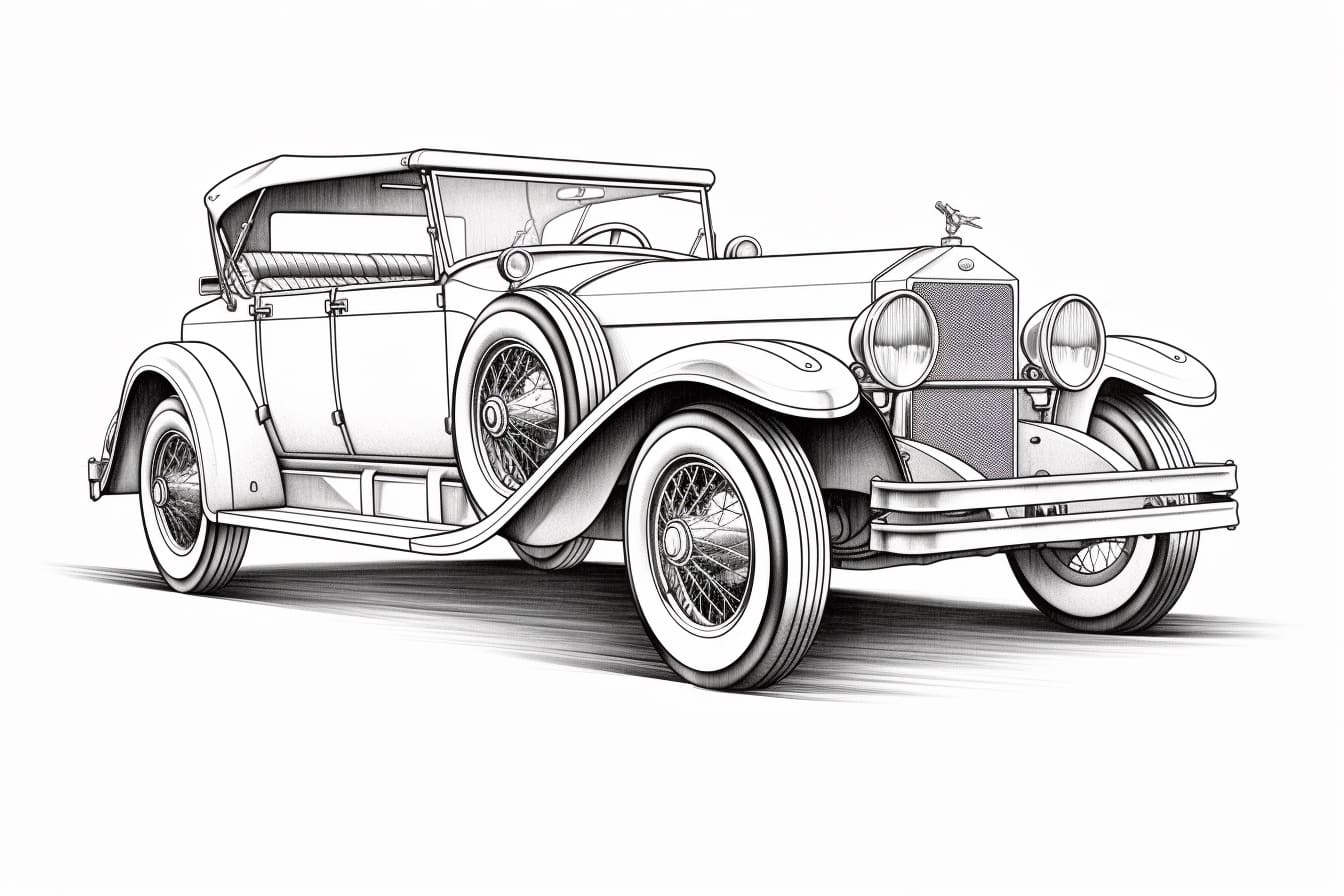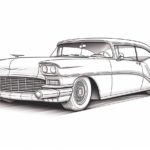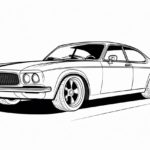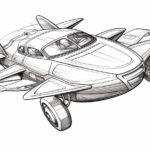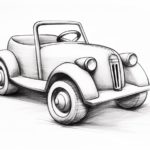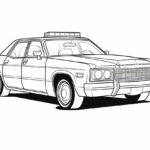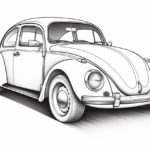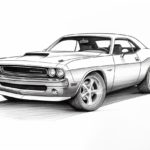Drawing automobiles can be both a rewarding and challenging experience for artists of all levels. With their sleek lines, intricate details, and dynamic shapes, cars provide a fascinating subject matter that allows for endless creative exploration. Whether you are a beginner looking to improve your drawing skills or a seasoned artist seeking a new challenge, mastering the art of drawing automobiles can open up a world of possibilities for your artwork. In this guide, we will explore techniques, tips, and tricks to help you capture the essence of these iconic machines on paper. So rev up your artistic engines and get ready to dive into the exciting world of drawing automobiles!
Materials Required
To draw an automobile, you will need the following materials:
- Pencil: Use a range of pencils, such as H, HB, and B, for sketching and detailing.
- Eraser: A good quality eraser to correct mistakes and make adjustments.
- Paper: Choose a smooth, heavy-weight paper or a sketchbook specifically designed for drawing.
- Ruler: To ensure straight lines and correct proportions.
- Compass: For drawing circles and curves accurately.
- Reference images: Gather images of automobiles from different angles for inspiration and guidance.
- Colored pencils or markers (optional): If you want to add color to your drawing.
- Blending tools: Such as blending stumps or tortill
How to Draw an Automobile: a Step-by-step Guide
Step 1: Sketch the Basic Shapes
Start by drawing a horizontal line slightly curved at the ends for the car’s roof. Then, sketch the main body of the car using a rectangular shape for the body and smaller rectangles for the windows. Add circles for the wheels and basic shapes for headlights and tail lights.
Step 2: Refine the Body
Refine the shape of the car body by adding more curves and details to the front and rear bumpers. Add the doors by drawing vertical lines within the main body shape. Make sure the proportions look balanced and symmetrical.
Step 3: Add Details
Add details such as the grille, headlights, side mirrors, door handles, and any other distinctive features specific to the type of car you are drawing. Pay attention to the placement and size of these details to capture the essence of the automobile.
Step 4: Define the Wheels
Refine the circles you sketched for the wheels by adding depth and thickness to represent the tires. Add spokes or rims to the wheels to make them look more realistic. Ensure the wheels are aligned correctly with each other and the car body.
Step 5: Finalize the Drawing
Clean up your sketch by erasing any unnecessary guidelines and refining the lines to make them smoother and more defined. Add shading to create depth and dimension to your drawing, paying attention to light source for proper shadowing. Consider adding a background to enhance the overall composition of your automobile drawing.
Step 6: Review and Adjust
Take a step back and review your drawing to see if there are any areas that need adjustments or corrections. Make any necessary changes to ensure your drawing looks accurate and detailed. Practice and patience are key to improving your skills in drawing automobiles.
Conclusion
In conclusion, drawing an automobile can be a challenging yet rewarding task for artists of all levels. By breaking down the complex shapes and focusing on proportions, details, and perspective, anyone can learn to capture the essence of a car on paper. Remember to practice regularly, study real-life vehicles, and experiment with different techniques to improve your skills. With patience and dedication, you can master the art of drawing automobiles and create stunning works of art that showcase your passion for both art and automotive design.
Fun Facts About Automobiles
- The first car accident in history occurred in 1891 in Ohio when a steam-powered car crashed into a tree.
- The Volkswagen Beetle, also known as the “Bug,” was in production for over 65 years, making it one of the longest-running car models in history.
- The average car has over 30,000 parts, including nuts, bolts, and screws.
- The world’s fastest car is the Bugatti Chiron Super Sport 300+, which has a top speed of over 300 mph.
- The first car to have air conditioning was the 1939 Packard.
- The longest traffic jam in history occurred in China in 2010 and lasted for over 60 miles and 12 days.
- The Porsche 911 is one of the few cars that has remained in continuous production for over 50 years.
- The first car radio was invented in 1929 by Motorola.
- The world’s first speeding ticket was issued in 1902 in Ohio for driving at a blistering 45 mph.
- The average car spends about 95% of its life parked.
Suggestions for Scenes and Settings for Automobile Drawings
- Classic Car Show: Illustrate a scene at a vintage car show, with various classic automobiles from different eras lined up for display. Include details like shiny chrome accents, colorful paint jobs, and excited spectators.
- City Street: Draw a bustling city street with cars of different makes and models zipping by. Add in elements like traffic lights, pedestrians crossing the street, and tall buildings in the background to create a vibrant urban scene.
- Race Track: Capture the adrenaline-filled atmosphere of a race track, with sleek race cars speeding around the circuit. Include details like cheering crowds, tire marks on the asphalt, and flags waving in the wind.
- Countryside Drive: Depict a peaceful countryside setting with a winding road and a classic convertible cruising along. Add in rolling hills, blooming flowers, and a clear blue sky to evoke a sense of relaxation and freedom.
- Car Workshop: Show a mechanic working on a car in a bustling workshop filled with tools, spare parts, and grease-stained workbenches. Include details like hanging lights, toolboxes, and posters of vintage cars on the walls.
- Car Wash: Illustrate a colorful and lively scene at a car wash, with cars lined up for a scrub and rinse. Include soap suds, water spraying, and happy attendants washing the vehicles to create a vibrant and dynamic composition.
- Drive-In Movie Theater: Create a nostalgic scene at a drive-in movie theater with cars parked in front of a giant screen showing a classic film. Add in details like popcorn boxes, soda cups, and a starry night sky to capture the retro charm of this setting.
- Future City: Imagine a futuristic cityscape with sleek, futuristic cars flying through the air or gliding on elevated highways. Add in advanced technology, neon lights, and skyscrapers to create a visually striking and imaginative scene.
- Car Graveyard: Draw a haunting scene at a car graveyard, with rusty, abandoned vehicles stacked haphazardly in a desolate landscape. Include details like overgrown weeds, broken windows, and a sense of decay to evoke a feeling of abandonment and nostalgia.
- Car Parade: Illustrate a festive car parade with brightly decorated cars driving through the streets in celebration. Add in balloons, streamers, and enthusiastic spectators waving from the sidewalks to capture the joy and energy of the event.

